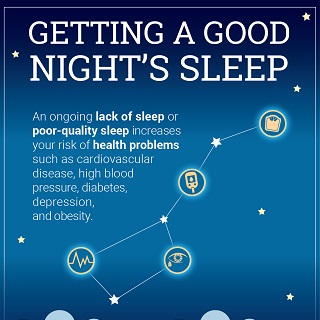Sleep is a fundamental aspect of human life, yet its importance is often overlooked. A good night’s sleep is not just a luxury; it is a critical component of overall health and well-being. Understanding the science behind sleep can help us achieve a more restful night. One essential aspect of sleep is its stages, each serving a unique purpose in rejuvenating our bodies and minds. Let’s explore the different stages of sleep and how they contribute to a restful night.
Stage 1: NREM (Non-Rapid Eye Movement) Sleep
Stage 1 marks the transition from wakefulness to sleep. It is the lightest stage of sleep and typically lasts for a few minutes. During this stage, the brainwave activity begins to slow down, and the body starts to relax. If you’ve ever experienced the sensation of falling suddenly when dozing off, you’ve likely experienced the hypnic jerk, a common occurrence during this stage.
Stage 1 NREM sleep sets the foundation for deeper sleep stages. It prepares the body for a more profound rest and helps us ease into a state of slumber.
Stage 2: NREM Sleep
Advancing from Stage 1, we enter Stage 2 NREM sleep, which constitutes a significant portion of our sleep cycle. During this stage, our brainwaves continue to slow down, and specific patterns emerge. Sleep spindles, which are short bursts of brainwave activity, and K-complexes, large and slow brainwaves, play a role in protecting our sleep from external disturbances.
Stage 2 NREM sleep is vital for memory consolidation and information processing. It helps us retain and organize information gathered during the day, contributing to overall cognitive function.
Stage 3: NREM Sleep
Stage 3 NREM sleep is often referred to as deep sleep or slow-wave sleep (SWS). It is the most restorative stage of sleep, and it is during this stage that the body undergoes significant physiological changes. Delta waves, the slowest brainwaves, dominate this stage.
Deep sleep is essential for physical recovery and growth, as it promotes tissue repair, muscle growth, and the release of growth hormones. Moreover, it plays a crucial role in strengthening the immune system, enhancing the body’s ability to fight off infections and illnesses.
Stage 4: REM (Rapid Eye Movement) Sleep
REM sleep is the stage associated with dreaming. It is characterized by rapid eye movements and increased brain activity, resembling that of wakefulness. Despite the body being in a state of paralysis during REM sleep, the brain is highly active.
During REM sleep, the brain processes emotions and experiences, consolidating memories and facilitating emotional regulation. Dreams during REM sleep can be vivid and emotionally charged, allowing the brain to explore and process various scenarios and emotions.
REM Sleep and Dreams
Dreaming is a complex and fascinating phenomenon that occurs primarily during REM sleep. Various dream theories attempt to explain the purpose and meaning behind our dreams. Some experts suggest that dreams serve as a way for the brain to process emotions and experiences, allowing us to work through challenging situations and find solutions to problems.
REM sleep plays a vital role in creativity and problem-solving. Studies have shown that a good night’s REM sleep can enhance our ability to think creatively and make connections between seemingly unrelated concepts.
The Sleep Cycle
Understanding the sleep cycle is crucial in comprehending the various stages of sleep and their significance. The sleep cycle comprises multiple rounds of NREM and REM sleep throughout the night.
Each sleep cycle typically lasts around 90 minutes, with Stage 1 and 2 NREM sleep occupying the early parts of the cycle and deep sleep (Stage 3) and REM sleep occurring later. As the night progresses, REM sleep durations tend to increase, while deep sleep durations may decrease.
Factors Affecting Sleep
Several factors can influence the quality of our sleep and the time spent in each stage. External factors such as noise, light, and temperature can disrupt sleep patterns, leading to fragmented sleep.
Internal factors like stress, anxiety, and medical conditions can also impact the sleep cycle. Common sleep disorders, such as insomnia, sleep apnea, and restless leg syndrome, can disrupt the natural progression through sleep stages, affecting overall sleep quality.
Importance of Deep Sleep
Deep sleep, or Stage 3 NREM sleep, is critical for both physical and mental well-being. During this stage, the body undergoes crucial restoration processes, promoting healing and growth.
Studies have linked deep sleep to various health benefits, including a strengthened immune system, improved mood, and enhanced cognitive function. It is during deep sleep that the brain consolidates memories, making it essential for learning and memory retention.
Optimizing Sleep for Better Health
To maximize the benefits of sleep, it is essential to adopt healthy sleep practices. Creating a sleep-friendly environment can significantly improve the quality of sleep. A comfortable and quiet sleeping space, along with a consistent sleep schedule, can help regulate the sleep-wake cycle.
Regular exercise and a balanced diet can also contribute to better sleep. Engaging in physical activity during the day can promote restful sleep at night, while avoiding heavy meals and caffeine close to bedtime can prevent sleep disruptions.
Sleep Across the Lifespan
As we age, our sleep patterns evolve. Infants and children require more sleep for growth and development, with a significant portion of their sleep spent in REM sleep. Adolescents experience shifts in their internal clocks, making it challenging for them to fall asleep early in the evening.
In adulthood, the amount of deep sleep tends to decline gradually. As we reach old age, sleep becomes more fragmented, with more time spent in lighter stages of sleep and less time in deep sleep and REM sleep.
FAQs
- What happens if I don’t get enough REM sleep?Insufficient REM sleep can lead to difficulties in memory consolidation, emotional regulation, and creativity. It may also result in increased irritability and difficulty in coping with stress.
- Can I dream during non-REM sleep stages?While dreams are more common during REM sleep, it is possible to experience dreams during NREM sleep stages, especially during Stage 2. However, these dreams are generally less vivid and emotionally intense.
- How can I remember my dreams more vividly?Keeping a dream journal can help improve dream recall. Place a notebook and pen by your bed and jot down any dream fragments or memories immediately upon waking.
- Does the amount of deep sleep change with age?
Yes, the amount of deep sleep tends to decrease with age. Older adults may experience less time in deep sleep, which can impact the restorative benefits of sleep. - Can sleep trackers accurately monitor sleep stages?While sleep trackers can provide valuable insights into sleep patterns, their accuracy in distinguishing between sleep stages, especially in consumer-grade devices, may vary. For a more accurate assessment, professional sleep studies are recommended.
Conclusion
A good night’s sleep is essential for optimal physical and mental health. By understanding the stages of sleep and their significance, we can work towards optimizing our sleep patterns for better well-being. From the light slumber of Stage 1 to the dream-filled REM sleep, each stage contributes uniquely to our overall rest and recovery. Priori click for more info tizing sleep and adopting healthy sleep practices can lead to a more restful and rejuvenating night’s rest, ultimately benefiting our daily lives.

Greetings and welcome to my corner of the dreamscape! I am Ethan Sterling, a dedicated and passionate Dreams Specialist on a profound journey of exploring the depths of the subconscious mind. For years, I have immersed myself in the study of dreams, their intricate meanings, and the transformative power they hold for emotional and spiritual healing. More

